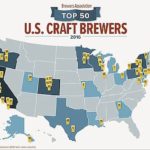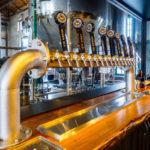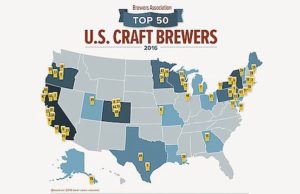What makes an IPA great?
Local brewers weigh in on America’s most popular style
By Jon Abernathy / For The Bulletin
It probably would come as no surprise to beer lovers that IPA, or India Pale Ale, is the top-selling style in craft beer. IPA accounted for over 25 percent of the U.S. market in 2015 — meaning at least one out of every four craft beers sold is an India Pale Ale. And its popularity continues to grow. To meet that demand, nearly every brewery brews an IPA as part of its lineup, and many lead with the style as a flagship beer. How did this ale become so popular?
IPA has a storied history extending back to 18th-century England, although the oft-repeated tale that the ale was invented specifically for export to India is more myth than truth. According to the 2015 Beer Judge Certification Program guidelines: “Simply because this is how IPA was shipped, doesn’t mean that other beers such as Porter weren’t also sent to India, that IPA was invented to be sent to India, that IPA was more heavily hopped than other keeping beers, or that the alcohol level was unusual for the time.”
A number of different types of beer were certainly shipped to India and other far-flung destinations, and brewers discovered that stronger, well-hopped beers traveled well. However, such beers were not brewed exclusively for export, and in fact they were popular at home as well as abroad. The term “India Pale Ale” did not come into use until the 1830s, and in the following decades the strong pale style was widely brewed for domestic consumption in England.
The modern American interpretation is generally in the range of 6 to 7 percent alcohol by volume and features American hop varieties known for imparting characteristics of fruit, citrus, pine, herbal spiciness and more. Hops dominate the aroma and flavor, though they should balance cleanly with the underlying ale and overall finish dry.
Within these parameters brewers vie for an ever larger slice of the IPA pie, and India Pale Ale is often the most represented style at competitions and festivals.
With so many IPAs on the market to choose from, one wonders: What makes a great IPA? What makes them different? How does an IPA stand out from the crowd? To help answer those questions, several local brewers offered their ideas about the style.
“Balance is possible with IPA!” said Crux Fermentation Project’s Larry Sidor. “(I look) for bitterness quality that is sharp and clean. Many IPAs suffer from bitterness that is lingering, soapy, metallic or excessive in tannins. Bitterness also needs to be balanced with malt profiles. Once this is achieved, then the presentation of hop aroma and flavors can be addressed.”
Zach Beckwith of Three Creeks Brewing looks for balance and quality. “Great IPAs are bursting with hop flavor and aroma but have great balance,” he said. “High quality hops AND malts are key in a great IPA.”
For Brett Thomas of Sunriver Brewing, freshness is key. “I look for a few different things — top of the list is certainly freshness, followed closely by hop-malt balance,” he said. “Also, depth of hop character, adequate hopping rates and preferably a restrained bitterness.” Not surprisingly, for Thomas this is also how an IPA stands out. “You have to keep your IPA fresh — don’t flood the market with your product.”
Schauland sees a multi-pronged approach to differentiating IPAs in the market. “Number one thing is that you still need to make a quality product,” Schauland said. “I think the second thing is to have good enough marketing to get that product into the hands of the beer drinkers.”
In the end, much of what makes an IPA hit or miss comes down to that key ingredient: hops.
Click here to view original web page at www.bendbulletin.com






















